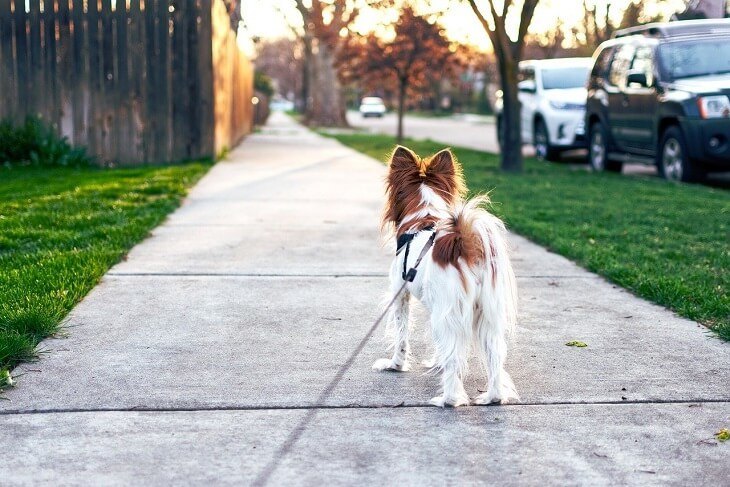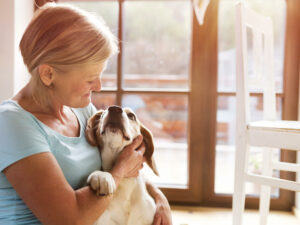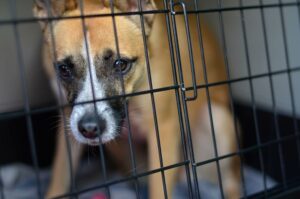Are you headed out for a walk with your dog? Jogging along with your dog or taking your pooch to the park is a great way to get some exercise. Does your dog bark and pull at the leash when you pass other dogs or people? It's a common behavior that's somewhat embarrassing – why can't your dog just get along with others?
If you have a mid-sized to larger breed, this pulling and barking behavior is not only embarrassing, but it's dangerous as well. Your dog barks and lunges at the other person or dog and their leash can catch around your legs, sweeping you off your feet.
Falling down could cause serious injury, and your dog could get free of your grip on the leash, attacking the other person or animal. That sounds like a nightmare scenario, right? Let's unpack the reasons for this behavior and how you can train your dog to behave when you're out for a walk.
Why is your dog barking while you’re out walking?
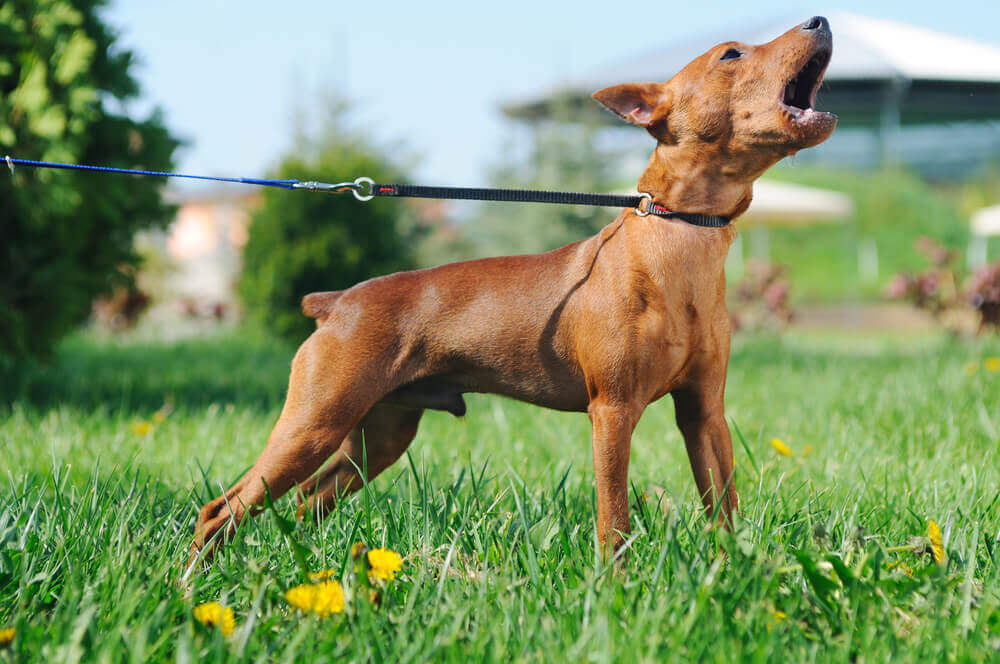
There might be several reasons why your dog barks at other people and dogs while you're on a walk. According to the experts, here are the top causes of barking when you're out for a walk.
1. The Fight-or-Flight Response
If your dog typically barks at other animals or people passing your gate at home, there's more of a chance they'll bark outside of the yard. It's a defensive response, and dogs bark when they get overly excited. The dog is protecting its territory and barks as a sign of authority and aggression, warning the intruder away.
When you take them on a walk, you must put them on a leash to comply with state legislation surrounding dogs in public spaces.
However, your dog sees the leash as an extension of you, and they consider themselves your protector on your walk.
When you come across another dog or person, they want to attack or flee, to get away from the other animal or person. As a result, they might bark and lunge at the other animal. Since the other animal or person moves away, the dog learns that this behavior chases away the threat.
As a result, they continue to repeat it in the same scenarios.
2. Frustrated Animal Greetings
Some dogs have bad social skills, and they never fully learn how to pass other dogs on the street without causing a ruckus. When dogs are puppies, many owners socialize them with other animals. As you mingle with the other owners, the dogs sniff and interact with each other.
This greeting system is common in dogs, and it's how they say hello.
However, as the dog gets older, the owner might fail to keep up these social interactions. As a result, the dog lunges and barks at other dogs on your walk, attempting to run over and say," Hi."
3. Under-Socializing the Dog
Owners that don't socialize their dogs in their puppy years can grow up with dogs that are uncomfortable around other animals. They may have issues around other dogs and cats, unintentionally mistaking other dog's curiosity as aggression.
As a result, the dogs develop anxiety around other animals, creating lunging and barking behavior when you're out on a walk.
4. Improper Training Technique
It's a good idea to take your puppy to training classes when they're young to avoid this behavior. However, if you never got around to the training classes, thanks to the pandemic or taking on an adult or adolescent dog, it's NOT too late for training.
Some owners make the mistake of punishing the dog for lunging or barking behavior. They might hurt a dog and issue a stern warning to prevent the action. In severe mistreatment cases, the owner might try to choke the dog or hit it hard, something that should never be done.
This type of training from the owner causes the dog to think that the other dog is the reason for your hurting them. As a result, it reinforces their behavior around other dogs. You get the exact opposite outcome you were expecting from the discipline.
5. Genetic and Learned Behavior
If you have two or three dogs, they all interact with each other like a family. Therefore, if one of the dogs develops barking and lunging behavior, all of them are likely to start copying it. There's also a genetic component to this behavior passed down in the parent's traits.
If The Dog You're Walking Is Barking at Another Dog, What Should You Do?
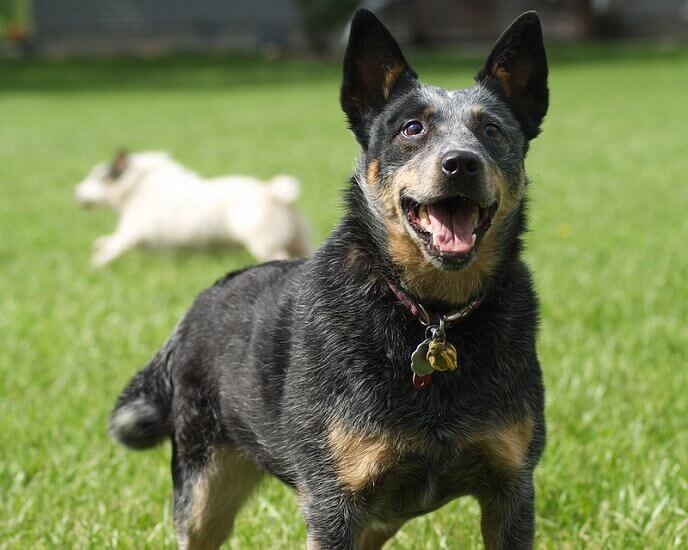
via flickr/9258photo
So, what can you do to stop this barking and lunging behavior in your dog? You and your dog were having a great time on your walk until she nearly pulled you off your feet as the neighbor ran past. There must be an answer.
Professional dog trainers call this barking and lunging behavior "Leash Reactivity" (LR).
LR covers a blanket of behavior around barking and lunging at other people and dogs while your animal is on the leash.
Fortunately, it's possible to train this behavior out of your dog. It takes some time and effort, especially if you have an older, larger animal.
However, you're going to have a harder time if it's a larger dog. Worse still, if the other dog you're passing also suffers from LR, both animals could get into a leash-pulling, barking hysteria that's challenging to control – and let's hope neither of them gets free of your grip.
Pair these management tips when training a leash reactive dog while working on counter-conditioning and desensitizing. We discuss this training later on in this article.
- Take emergency U-turns when you see another dog approaching by simply quickly changing direction.
- It's easy to stop a smaller dog barking by simply picking them up on the walk, removing them from the situation and calming them down.
- Go for walks early in the morning or late at night to avoid meeting other dogs.
- Use a body harness and not a head harness with a leash reactive dog.
How To Stop Dog Barking At Strangers

Similarly, your dog might have a problem with people and dogs when you're out on a walk. It's common for dogs with LR to react to the postman riding past on his bike or to other movements or behavior they don't understand, like a kid riding past on a skateboard.
Dealing with leash reactivity in your dog is an unpleasant experience that ruins the walk on more than a few occasions. However, it's possible to train your dog out of this behavior. It might take a few weeks or months, depending on the age and breed of your pup.
When you're out on the walk, and your dog starts to go would at another animal or person, remember to stay calm. Your dog can detect your emotional state, and if they sense you are afraid, it heightens their natural aggressive instinct to protect you.
Never yell at the dog as it just amplifies the stress of the situation, causes confusion with the dog, and reinforces the behavior. Above all, never choke your dog with a choke chain. Not only is that inhumane, but it can damage your dog's throat and vocal cords.
Desensitization and Counter-Conditioning
Arm yourself with treats and counter condition training your dog to associate approaching strangers (and other dogs) with something positive.
It's essential you use high-value rewards here - such as small pieces of chicken, cheese, or hot dog.
You may want to consider asking friends or family members to help out initially. Next, recruit helpers from dog parks or local dog shelters.
Follow these steps to taking control of your dog's LR behavior when you're out on a walk.
Dogs respond to your behavior and environmental stimulus. Keep treats in your hand, and let your dog sniff them before you walk. Put them in your pocket and start the walk.
When you see strangers approaching, get your pup to sit and give her the treats. First, do this when there is sufficient distance - dog's threshold being 60 to 70 feet - between the people and your dog to avoid getting her to react and start barking.
Next, start getting closer to the people, positioning yourself between them and your dog. Get her to sit and give her more treats.
Once the trigger has moved out of your dog’s sight, stop delivering treats.
Repeat this for every human that comes into your dog’s sight.
When you see your dog getting more comfortable increase the challenge and begin decreasing the distance and increasing the number of people.
Continue this behavior, and after a few weeks, she'll begin to relax and be less nervous and reactive on walks. Your dog will learn that when they calm down and sit beside you, they get a treat!
Can I stop my dog’s barking with a dog bark collar?
Under no circumstances should you ever attempt to use a shock collar on your dog. How would you like it if someone decided to retrain you using electroshock therapy? It's an inhumane practice, and it doesn't produce results.
Bark collars don't address the animal's underlying issue, and it might create more stress and confusion because they don't understand why they're getting shocked. Increasing stress in the animal leads to anxiety and more aggression in the animal. As a result, you end up creating the exact opposite effect of what you intended for your dog.
According to a study by BMC Veterinary Research, shock collar therapy in dogs produces undesirable results. Why go to the lengths of shock therapy when you can cure leash reactivity with time, patience, and treats?
If The Problem Still Persists, Seek Further Help!
There are two good online video based training courses we recommend for dogs that bark at various triggers (people, dogs, skateboards etc.) when out walking - Doggy Dan's The Online Dog Trainer and Adrienne Farricelli's Brain Training for Dogs.
These comprehensive training courses tackle all sorts of behavioral problems including how to manage a leash-reactive dog, excessive barking, phobias, separation anxiety, puppy training and hyperactivity using force free methods that are effective at stopping bad behavior.

